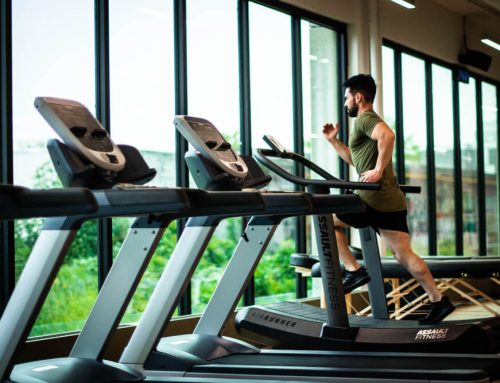As the sun continues to rise on the horizon of life, the pursuit of health and vitality remains an enduring aspiration. For many seniors, the idea of lacing up running shoes and taking the paths might seem like a distant endeavour, yet it holds the potential to unlock a new realm of well-being. The concept of older runners embracing running as a pathway to improved health is not only inspiring but also indicative of the timeless spirit of human ambition.
A. Starting Running for Health Benefits
Imagine the rush of wind against your skin, the rhythmic beat of your heart echoing your determination, and the sense of accomplishment that comes with every stride. These sensations are not reserved solely for the young but are accessible to seniors as well. Running, a quintessential human activity, offers a gateway to cardiovascular fitness, mental clarity, and a sense of accomplishment regardless of age.
B. Importance of Tailored Tips for the Older Runner
However, while the allure of running remains constant, the approach must be personalised to accommodate the unique considerations of older runners. The journey of a senior runner requires a nuanced strategy, one that honours the body’s experience and fosters a sustainable, fulfilling pursuit.
C. Essential Guidance for a Safe and Successful Start
The purpose of this article is clear: to offer a compass, a map, and a guiding light for older beginners venturing into the realm of running. The pages ahead are dedicated to distilling essential wisdom, tailored to those who embark on this journey with the wisdom and resilience that comes with age. With the following tips, we aim to pave a smooth path towards a safe and successful running experience, propelling seniors toward a healthier, more vibrant life.
Starting Right: Preparing for Older Running
A. Unique Considerations and Potential Challenges for Older Runners
Embarking on a running journey later in life comes with its own set of considerations. While the desire to stay active remains unwavering, it’s essential to acknowledge and address potential challenges. Factors such as joint health, muscle flexibility, and existing medical conditions may require special attention. Understanding and adapting to these unique aspects will pave the way for a safer and more enjoyable running experience.
B. Importance of Seeking Medical Advice Before Beginning a Running Routine
Before the first step hits the pavement, the guidance of a medical professional is paramount. The wisdom of age is in understanding that consulting a healthcare provider before engaging in a new fitness regimen is not just a suggestion, but a necessity. A thorough medical evaluation can identify any potential concerns, ensuring that the chosen running routine aligns with one’s health profile. This proactive approach not only mitigates risks but also provides a solid foundation for a successful and sustainable running journey.
Essential Tips for Older Runners
A. Gradual Progression: Start Slowly to Prevent Injuries
In the realm of running, patience is a virtue that becomes even more valuable for older runners. Gradual progression is key to avoiding overexertion and injury. Begin with shorter distances and comfortable paces, allowing your body to adapt over time. Rushing the process increases the risk of strains, discomfort, and setbacks that could curtail your newfound enthusiasm.
B. Warm-Up and Cool-Down: Emphasize Proper Preparation and Recovery
Just as a well-tuned engine warms up before hitting the highway, your body requires a thoughtful warm-up routine. Engage in dynamic stretches and low-impact movements to prepare your muscles and joints for the impending run. Post-run, don’t skip the cool-down; it’s your body’s way of gradually transitioning from exertion to rest, aiding in preventing stiffness and enhancing recovery.
C. Strength and Flexibility: Incorporate Exercises for Bone Density and Mobility
Running isn’t just about the cardiovascular system – it involves a symphony of muscles, joints, and bones. Integrating strength and flexibility exercises into your routine is akin to reinforcing the pillars of a building. These exercises not only improve bone density but also enhance joint mobility, reducing the risk of injuries as you traverse your running journey.
D. Listen to Your Body: Be Mindful of Signals and Incorporate Rest
In the grand orchestra of running, your body is the conductor. Pay heed to its signals and cues. If you’re feeling fatigued or experience discomfort beyond the norm, don’t hesitate to take a rest day. Rest is a vital component of progress, allowing your body to recover, rejuvenate, and be ready for your next stride.
E. Appropriate Gear: Invest in Suitable Footwear and Comfortable Attire
As you embark on this running adventure, invest in your equipment – starting with the most important: footwear. Seek out shoes that provide proper support, cushioning, and a snug fit. Comfortable and moisture-wicking attire is equally crucial for an enjoyable experience. The right gear not only enhances your comfort but also minimises the risk of injuries caused by ill-fitting shoes or chafing clothing.
Summary
With these essential tips as your guide, you’re equipped to navigate the nuanced terrain of running as an older beginner. Remember, each step is a triumph, each stride a testament to your determination, and each run an investment in your well-being.
Enjoyed reading this? Please see our other advice articles here.






